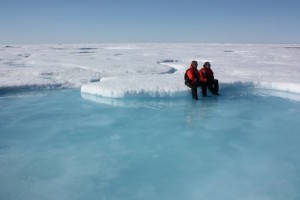 http://www.treehugger.com/climate-change/taking-close-look-last-ice-area.html
http://www.treehugger.com/climate-change/taking-close-look-last-ice-area.html
“I’m melting…I’m melting!!!” (Wicked Witch of the West, Wizard of Oz). This article takes a closer look on how the extreme melting of polar ice caps in the arctic have over-arching effects on several animal species, people and will have long term consequences for our environment.
It has become apparent that this cycle of melting is moving in a clear direction “an ice-free arctic.” There have been projections that the Arctic will experience its first ice-free winter in 2015; what will this mean for the animals and people who depend on this ice environment for survival?
The three major species that will be affected are polar bears, seals and walruses. Polar bears, who have a unique way of hunting seals and fish through gaps and holes in the ice need the sea ice for survival. Without it, polar bears have been driven to dire straits, swimming upwards of 500 miles to find icy hunting grounds, and others resorting to cannibalism for survival.
In terms of other species, it is predicted that the arctic habitat will overlap with that of the grizzly bears by 2040—creating additional threats for animals like walruses and seals. Forced into the Last Ice Area, this small number of remaining various species are clustered extremely close, raising competition levels and making it nearly impossible to find adequate food needed in order to carry on and reproduce.
For the people of the arctic, though warm temperatures might seem as a nice change to many of us, this actually is not the case. These warmer temperatures are in fact destroying their environment, livelihood and economies. With a warmer climate, as “ice melts, shore lines are becoming increasingly unstable, threatening entire towns with rapid erosion and rising sea levels.” Ice trails, important for crossing the ice in the past are disappearing, and as the arctic animals dwindle in population, so thus do the economies of these arctic towns, who depend on these species for the success of their market and general sustenance. As animal species are being forced to move closer and closer inward towards the coast due to the destruction of their icy habitats, this results in “more dangerous interactions between humans and animals.”
This article relates to many of the topics we have discussed in class this semester, showing the very real effects that global warming is having on our environment, and demonstrates what the future holds if we do not take global warming seriously and begin to take substantial action to reduce global emissions. If we do not, ice caps, polar bears and other arctic animals may soon be a thing of the past.
